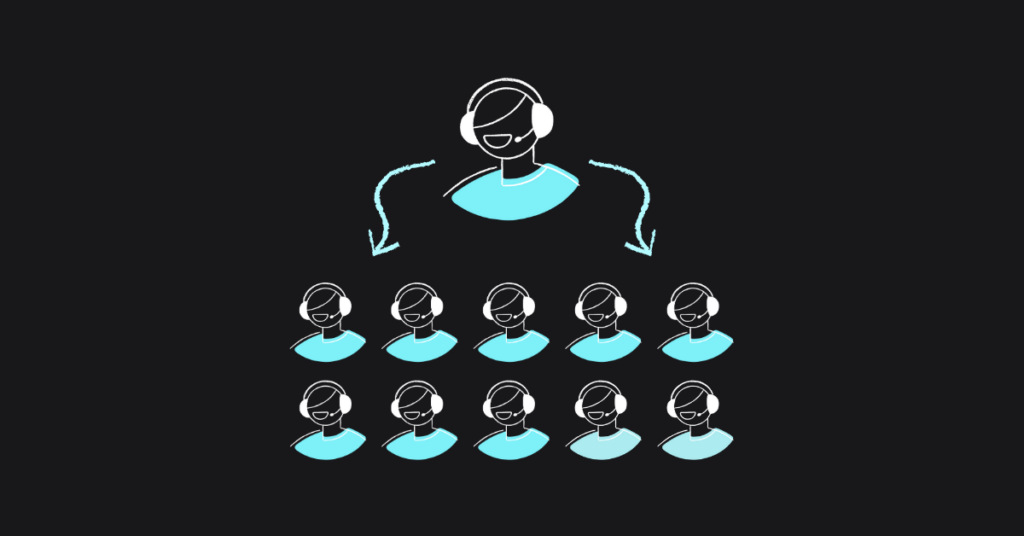
Table of contents
If you are in the market for a business VoIP system, you have two choices. One option is to go with hosted or cloud VoIP services. The alternative is to set up and deploy your own in-house VoIP system. Traditionally, companies chose to purchase and maintain their own equipment. This allows them to retain control over the system and customize it to their specific needs.
The general opinion was why would you trust an outside company to deliver essential services?
The Shift to Cloud Services
With a hosted VoIP service, business users don’t have to worry about purchasing hardware, maintaining equipment, and configuring the system. The provider takes care of service delivery, security, upgrades, maintenance, and technical/user support. It’s not surprising that small and medium businesses prefer cloud VoIP services.
Larger enterprises, on the other hand, continued to set up their own VoIP systems. These are similar to the traditional enterprise PBX system. All the equipment is housed in a closet or equipment room in the office. The major difference is that routing and signaling is done with IP protocols. No more copper wires and switches.
Over the last decade, however, even the bigger companies have started using hosted VoIP services. Cloud VoIP providers have developed their services to the point where companies of any size can use them reliably. Hosted VoIP services have become more robust over the last few years. Businesses have realized that managing their own VoIP system comes with distinct drawbacks.
Disadvantages of an In-House VoIP System
Prohibitive Capital Expenditure
There is no getting around the fact that setting up your own VoIP system is expensive. You have to purchase an IP PBX, gateway cards, software licenses, and IP phones. Depending on business requirements and the existing network, you may need even more hardware. It’s true that over the lifetime of the system, you will pay less per call. But a company must be ready for high capital expenditure to set up the system first.
While larger organizations can afford to spend on a new system, not many companies want to do so. Why tie up cash in a phone system – which is essential but not the main focus – when you could spend it on other areas?
In-House Expertise
Setting up an in-house VoIP system also means that you need experts who understand SIP technology on your IT team. If you don’t already have such professionals, you may need to hire them. All of these expenses quickly add up. What happens when your system expands to the point where your team cannot keep up? That’s right, you have to hire more people!
Additionally, your team is responsible for securing the phone system from the ground up. VoIP phones bring their own set of risks and vulnerabilities to your existing network. Your team should be capable of handling the new security needs.
Another disadvantage of an in-house VoIP system is that your IT team has to keep up with new updates, the latest features, and hardware upgrades. You cannot rely on an external service provider to roll them out.
Expansion and Upgrades
If you use a hosted VoIP service, adding new users usually means paying more. That’s because plan pricing is normally based on the number of users. With an in-house VoIP system, adding more users is practically free other than the cost of IP phones. However, that only works until you reach the limit of your current hardware. What happens afterward?
Expanding or upgrading your VoIP system can become a massive project depending on various factors such as the number of users, call volume, need for new features etc. Your existing team may not be able to manage the expansion. Many businesses find that they have to bring in external consultants to continue the project.
Let’s consider a simple example. Suppose a business has an in-house system that can manage 100 users. Recently, the company added a dozen new employees which pushed the total number of users to 105. Now they have to expand the current VoIP system.
But you can’t just add capabilities for the exact number of users you need. Most likely, the expansion modules will add more resources than what you need. It means the business is paying for underutilized resources. Now the system can handle 200 users but the company only has 105! In fact, you may never reach 200 users at all. That’s a lot of money to waste.
Using an in-house VoIP system instead of cloud services requires
- Financial investment
- A long-term commitment to maintenance and support
- Availability of in-house expertise
Even companies with the resources realize that it is not worth tying them up in the phone system. Those resources can be deployed elsewhere more effectively. Have the experts provide essential phone services over the cloud directly to your employees. Why not use cloud services when it makes life so much easier?
Read this post in: Español
More from the blog
Want to improve your business communication?
Unlock enterprise-class call center power at affordable prices – no hardware, no delays, no surprises!






